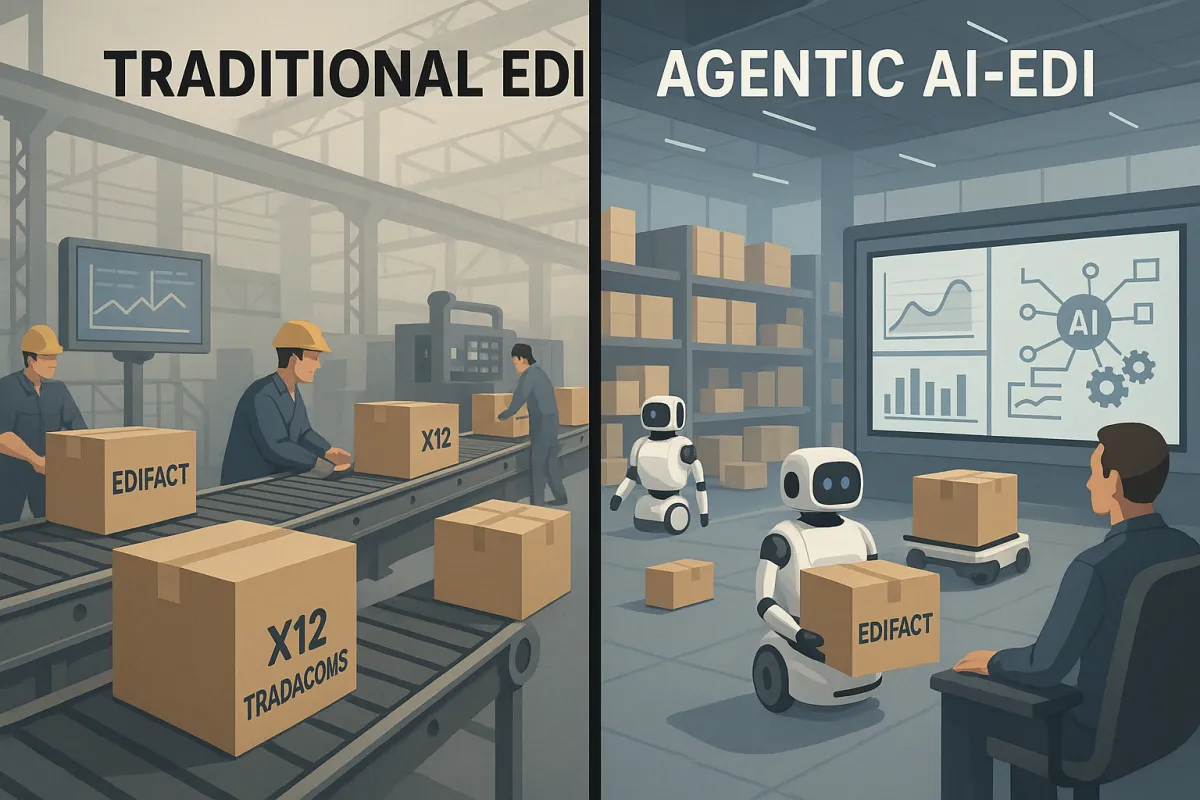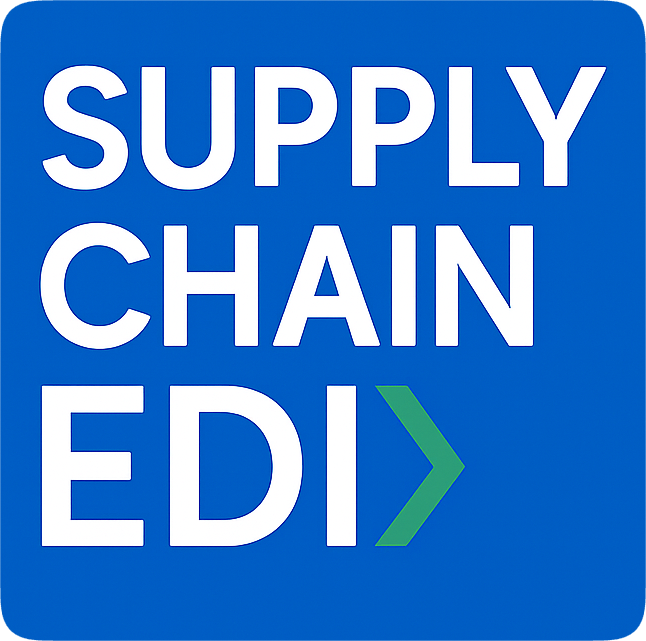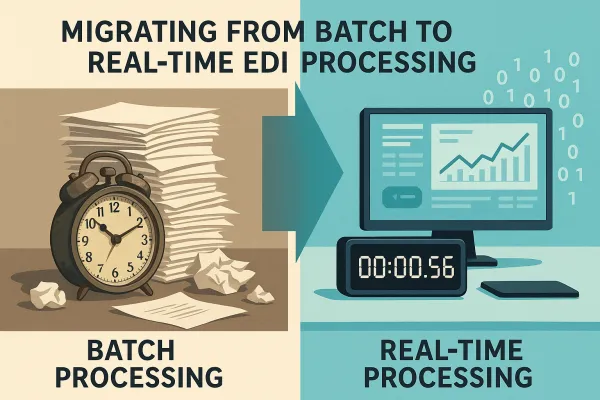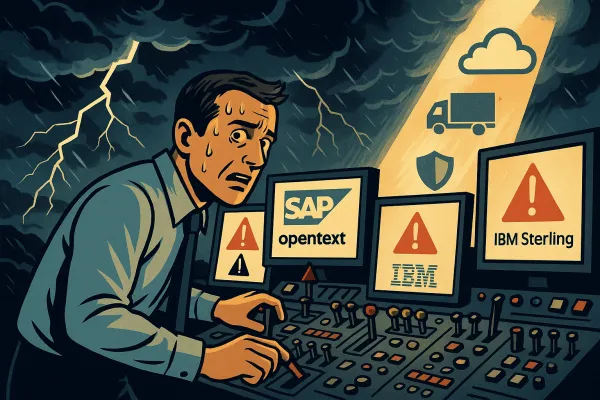The Agentic AI-EDI Integration Roadmap: How to Transition from Rule-Based Automation to Autonomous Data Exchange for Supply Chain Excellence in 2025

Your EDI workflows have operated the same way for decades: structured documents move between systems according to rigid rules, mapping translates formats, and exceptions require manual intervention. In 2025, Agentic AI has entered the vocabulary of nearly every CIO around the world. Many companies are still in the exploratory stages of Agentic AI, which means there's no better time than now to embrace this next evolution of AI. The question facing EDI managers today isn't whether autonomous AI agents will transform data exchange—it's how to build that transformation without breaking what already works.
Agentic EDI refers to the integration of autonomous AI agents into EDI systems, enabling them to not only exchange structured data but also interpret, act on, and optimize that data in real time. Unlike traditional automation that follows predetermined rules, Agentic AI operates proactively, setting plans, making decisions, and adapting to evolving situations to achieve desired outcomes. For your procurement workflows, this means purchase orders that route themselves based on supplier capacity, inventory levels that trigger replenishment without human oversight, and exception handling that resolves itself before you know there was a problem.
Understanding the Shift: From Traditional EDI to Agentic AI-Powered Data Exchange
Traditional EDI automation handles data transformation and routing—feed it a purchase order, get back an acknowledgment. But autonomous AI agents take control of the entire decision chain. They analyze supply patterns from your EDI 832 catalogs, predict supplier delays based on historical EDI 856 advance ship notices, and automatically adjust procurement strategies when your EDI 846 inventory updates show shortages.
With structured, complete, and accurate EDI data, supply chain leaders can embed autonomous AI agents into EDI workflows to alert, interpret, act on, and optimize data in real time. EDI archives contain rich transactional histories, and AI can use this data for inventory management, demand forecasting, anomaly detection, and overall supply chain optimization. The standardized nature of your EDI formats means less data cleaning before feeding information into AI models—your X12 and EDIFACT transactions are already structured for machine processing.
The Current State of EDI Automation vs. Agentic Capabilities
Your current EDI setup probably handles 80% of transactions automatically. Purchase orders flow from your ERP to suppliers, acknowledgments come back, and invoices process through your accounts payable workflow. But what happens when a supplier changes lead times without notice? Or when your demand planning system predicts a shortage that your standard reorder rules won't catch?
Traditional rule-based EDI requires you to anticipate these scenarios and code responses. Agentic AI learns from patterns across your entire transaction history. In 2024, AI-powered solutions have become integral to EDI, driving significant improvements in data processing, accuracy, and overall supply chain management. In 2024, AI-powered solutions have become integral to EDI, driving significant improvements in data processing, accuracy, and overall supply chain management. The business case becomes clear when you consider that manual exception handling consumes roughly 30% of EDI specialist time—time that autonomous agents can reclaim for strategic initiatives.
Pre-Implementation Assessment: Is Your Organization Ready for Agentic AI-EDI Integration?
Before embedding autonomous agents into your EDI workflows, audit your current data quality and infrastructure. AI agents perform only as well as the data they consume. Your EDI transaction volumes, ERP system compatibility, and network architecture determine implementation complexity.
Start with your ERP connectivity. APIs that work with EDI and can connect to common ERPs like ERPs, like SAP S/4HANA, Oracle Fusion, NetSuite, and MS Dynamics 365, are essential for businesses seeking agile, efficient, and future-ready supply chain integration. Each platform presents different integration challenges—NetSuite requires REST API configuration and custom mapping, while SAP environments need RFC connectors and IDoc transformation.
Technical Infrastructure Requirements
Your data quality directly impacts AI agent effectiveness. Clean, structured, and real-time EDI data enables autonomous decision-making. Inconsistent supplier codes, incomplete ship-to addresses, or delayed transaction processing creates blind spots that agents can't navigate.
Network security presents another consideration. Common challenges include complex data mapping, partner-specific formatting requirements, high costs with legacy EDI providers, and long onboarding timelines. Limited IT resources can also make integration harder without modern platforms that simplify and automate the process. Your existing AS2 connections, SFTP processes, and VAN relationships must support additional API traffic without compromising compliance or performance.
Change management becomes more complex with autonomous systems. Teams must learn to work alongside AI agents, trust their outputs, and understand when to intervene. This cultural shift often requires more effort than the technical implementation.
The Five-Phase Agentic AI-EDI Implementation Framework
Successful agentic AI deployment follows a structured approach that minimizes risk while maximizing learning. According to recent industry reports, the agentic AI market is projected to reach $78.2 billion by 2030, with enterprise adoption accelerating at an unprecedented 127% year-over-year growth rate in 2025. Organizations that start with pilot programs and scale gradually see better long-term results than those attempting full transformation immediately.
Phase 1: Use Case Selection and Pilot Program Design
Identify workflows where AI agents can deliver measurable impact with minimal disruption. Supplier onboarding presents an excellent starting point—traditional processes take weeks and involve multiple manual validation steps. Agentic EDI systems can autonomously validate supplier credentials against third-party databases, check compliance with ESG and regulatory standards, and verify financial stability through credit monitoring services.
Purchase order processing offers another high-value use case. Agents can analyze historical patterns to identify optimal order quantities, automatically split large orders across multiple suppliers to reduce risk, and adjust delivery schedules based on production requirements and supplier capacity constraints.
Define success metrics early. Reduced processing time, lower exception rates, and improved supplier compliance provide quantifiable outcomes. Establish baselines before implementation so you can measure actual improvement against projected benefits.
Phase 2-3: Technical Integration and Data Pipeline Setup
API integration becomes your primary connection method between AI agents and existing EDI infrastructure. NetSuite doesn't come with built-in EDI capabilities, so if you're using Oracle NetSuite, you'll need reliable info on how to handle EDI integration. Modern ERP systems provide REST APIs that support real-time data exchange, but legacy systems may require custom middleware development.
Model training requires historical EDI data across multiple transaction types. Your EDI 850 purchase orders, 810 invoices, and 856 ship notices contain patterns that agents use to predict supplier behavior, identify anomalies, and optimize procurement decisions. AI agents achieve superior data accuracy—approximately 98-99% according to industry benchmarks—while reducing exception handling time.
ERP connectivity challenges parallel those faced when integrating modern TMS solutions like Cargoson with traditional enterprise systems. Data mapping complexity, real-time synchronization requirements, and error handling protocols need careful planning and testing.
Overcoming Common Integration Challenges
Data mapping represents the most time-consuming aspect of agentic AI-EDI integration. Complex mapping and translation: Every trading partner may use different data formats or standards. Converting those documents into a format the ERP system understands often requires detailed data mapping and ongoing adjustments. Each supplier implements EDI standards differently—some use variant codes, others include custom segments, and many require specific validation rules.
Legacy system constraints create additional barriers. Your mainframe-based EDI translator may not support modern API connections, or your ERP database might lack the flexibility to store AI-generated insights alongside traditional transaction data. These technical debt issues require careful workarounds or system upgrades.
Change management resistance affects adoption more than technical challenges. EDI specialists who've managed exception handling manually for years may distrust autonomous agents. Involving them in agent training and validation builds confidence and ensures human oversight remains available when needed.
ERP Compatibility and Data Flow Optimization
Each ERP platform presents unique integration patterns. SAP environments benefit from direct RFC connections and IDoc processing, while Oracle systems work better with SOA Suite middleware and database triggers. Integration with Major ERPs: Deep experience with SAP, NetSuite, Microsoft Dynamics, Infor, and Visual—backed by AI-enhanced mapping and monitoring.
NetSuite integration requires custom SuiteScript development and token-based authentication. The most preferred method of integration is REST APIs as modern-day developers are habituated to using this. NetSuite follows a particular design pattern to request or make an API call. Unlike more rigid ERP systems, NetSuite's flexible schema supports custom fields and workflows that accommodate AI-generated data elements.
Data flow optimization becomes critical when autonomous agents generate high-frequency updates. Traditional EDI operates on batch schedules—orders process overnight, acknowledgments arrive by morning. AI agents work continuously, creating potential bottlenecks in systems designed for periodic processing.
Building Intelligent Agent Workflows for Common EDI Scenarios
Purchase order processing automation demonstrates agentic AI capabilities in action. Agents analyze demand forecasts, supplier capacity data, and historical performance metrics to optimize order timing and quantities. When market conditions change—raw material shortages, transportation disruptions, or demand spikes—agents automatically adjust procurement strategies without human intervention.
Exception handling protocols evolve from reactive fixes to proactive prevention. Traditional EDI flags exceptions after problems occur. Autonomous agents identify potential issues before they impact operations. Missing ship dates, quality problems, or invoice discrepancies trigger automated resolution workflows that often solve problems without human awareness.
As agentic EDI matures, new applications will emerge: Sustainability Tracking: Agents will monitor carbon emissions, ethical sourcing, and ESG compliance across the supply chain. Contract Lifecycle Management: AI will track contract terms, trigger renewals, and ensure compliance. Returns and Reverse Logistics: Agents will automate return authorizations, restocking, and credit issuance.
Purchase Order Processing Automation
Autonomous PO validation goes beyond format checking to include business rule verification. Agents verify budget approvals, check supplier certifications, and validate delivery dates against production schedules. They cross-reference pricing against contracted rates and flag unusual order patterns that might indicate fraud or errors.
Integration with procurement systems creates closed-loop automation. When agents identify optimal purchasing opportunities—bulk discounts, supplier promotions, or market price drops—they automatically generate purchase requisitions and route them through approval workflows. This proactive approach reduces costs while maintaining compliance with procurement policies.
The intelligence extends to supplier relationship management. Agents track performance metrics across all transactions, identifying suppliers who consistently deliver early, maintain quality standards, and offer competitive pricing. This performance data influences future sourcing decisions and contract negotiations.
Monitoring, Optimization, and Scaling Your Agentic AI-EDI System
Performance monitoring for autonomous systems requires new approaches beyond traditional EDI metrics. Transaction volume and error rates remain important, but agent decision accuracy, learning speed, and adaptation to changing conditions provide better insights into system health.
The key to success lies not just in understanding the technical capabilities of agentic AI, but in thoughtfully integrating these systems into existing business processes while preparing organizations for the cultural and operational changes they bring. Organizations that approach agentic AI implementation strategically, with careful attention to architecture, integration, and change management, position themselves to capture significant competitive advantages.
Continuous learning mechanisms enable agents to improve over time. Unlike static rule-based systems, AI agents analyze outcomes from their decisions and adjust future behavior accordingly. This self-optimization reduces the need for manual tuning and configuration updates.
ROI Measurement and Continuous Improvement
Measuring ROI from agentic AI requires broader metrics than traditional automation projects. Direct cost savings from reduced manual processing provide obvious benefits, but strategic advantages like improved supplier relationships, reduced stockouts, and better demand planning create long-term value that's harder to quantify.
Organizations report significant business acceleration from AI agent implementation. According to recent industry reports, the agentic AI market is projected to reach $78.2 billion by 2030, with enterprise adoption accelerating at an unprecedented 127% year-over-year growth rate in 2025. Companies with higher AI investment in supply chain operations report revenue growth 61% greater than their peers, with 62% of supply chain leaders recognizing that AI agents accelerate speed to action and decision-making.
Scaling strategies should account for expanding use cases and growing agent capabilities. Start with pilot programs in controlled environments, then gradually extend autonomous decision-making to more complex scenarios. The goal isn't to replace human oversight entirely but to elevate human teams to more strategic work while agents handle routine optimization and exception resolution.
Your EDI infrastructure evolved over decades to handle structured data exchange reliably and efficiently. Agentic AI represents the next evolution—maintaining that reliability while adding intelligence, autonomy, and continuous optimization. The organizations that begin this transformation now, with careful planning and measured deployment, will establish competitive advantages that compound over time. The question isn't whether autonomous agents will reshape supply chain data exchange—it's whether you'll lead or follow in this transformation.





